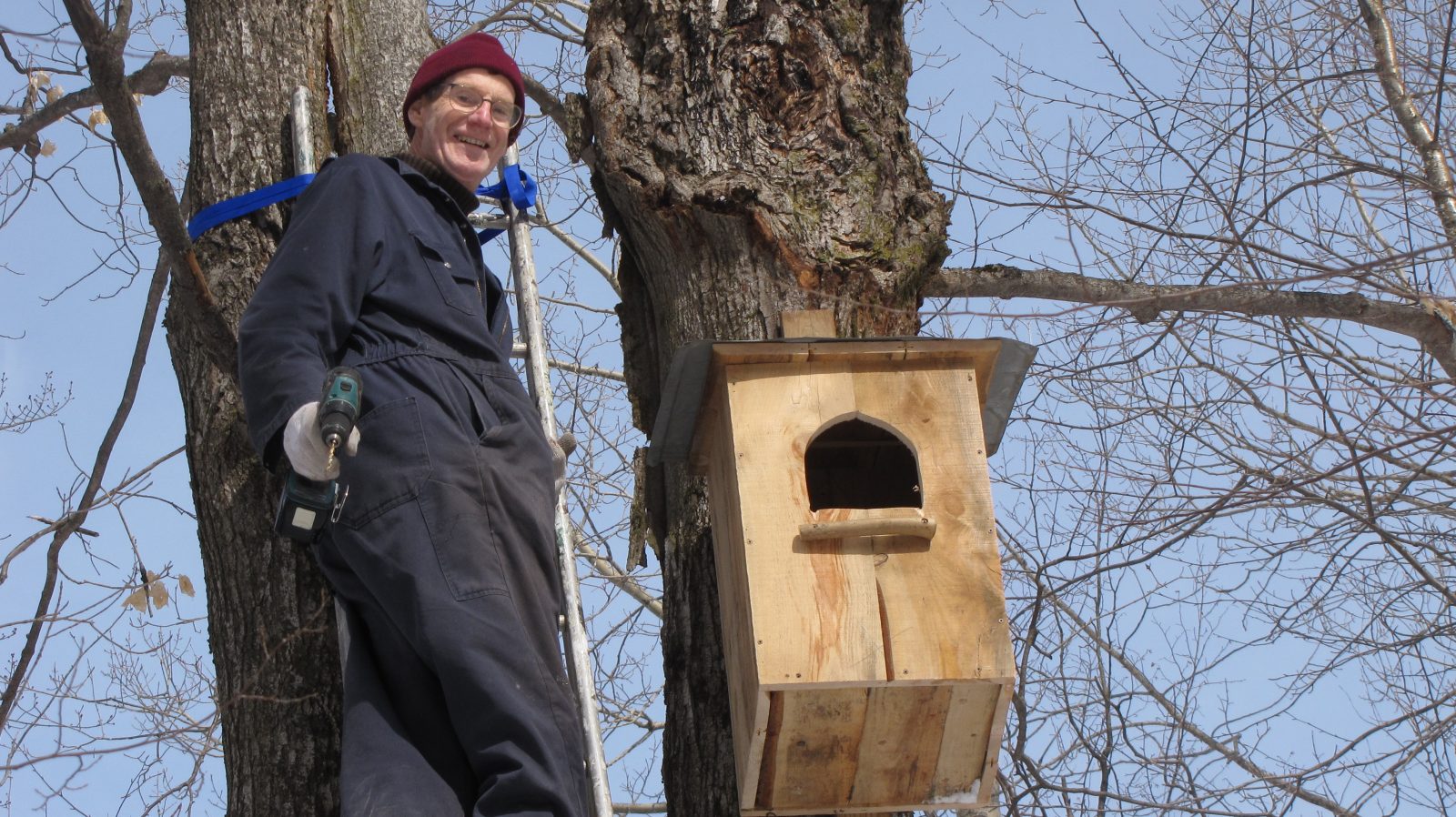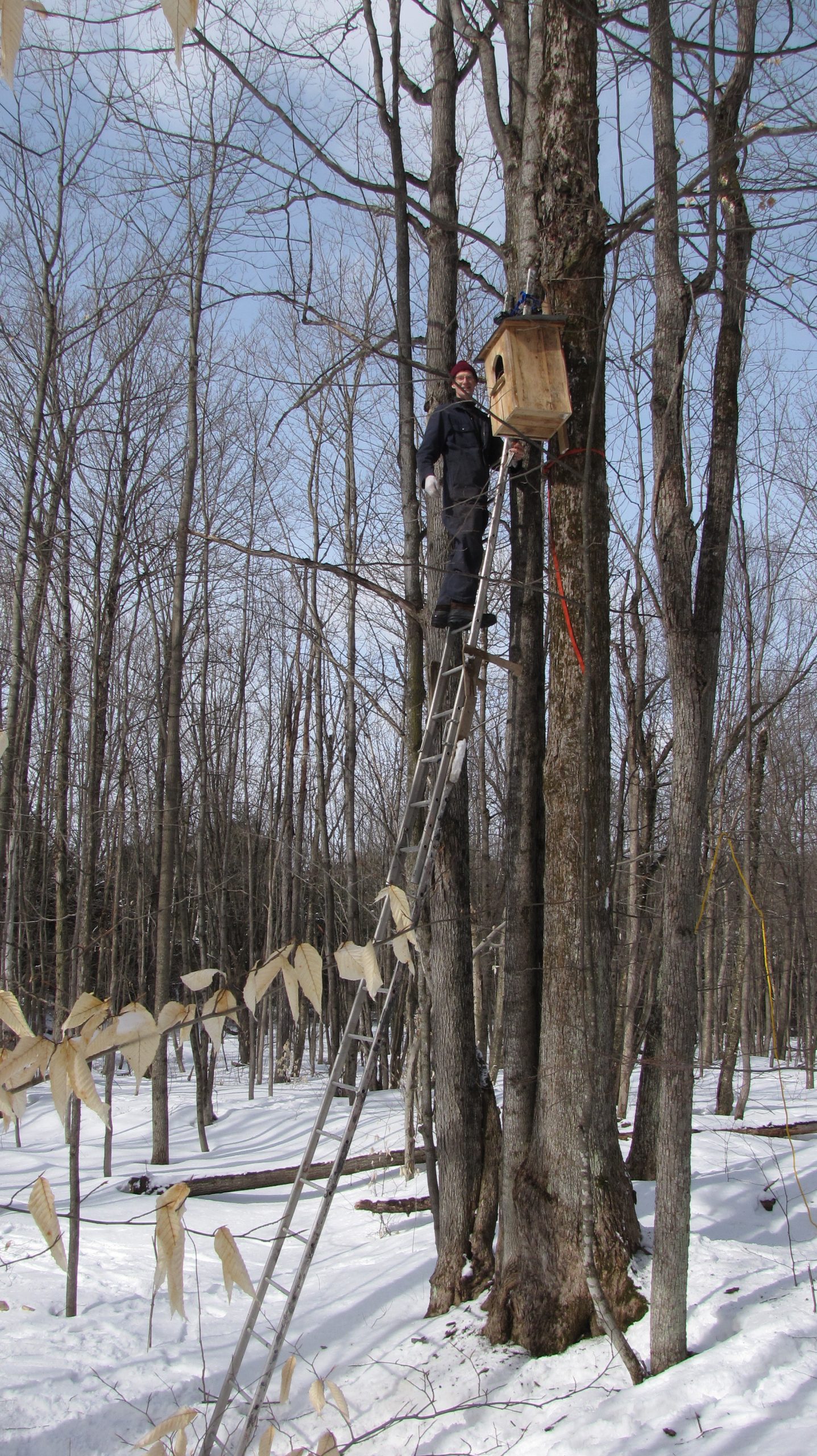The oversized birdhouses have been up for a couple of weeks now and within a week or so Paul O’Donnell and Guy Verreault—who built and installed them—will know if they have tenants.
“They’re big birdhouses because we’re hoping to attract a pair of mating barred owls,” explains Paul O’Donnell, “and with a wingspan that can reach four feet, they’re one of the larger species of owl in North America.”
While he’s been spending time in his woodlot in Cleveland for the last 35 years, it’s only in the last three or four years that he’s become conscious of barred owls.
“Trees are my real interest,” he says, “but I’ve been noticing birds since childhood, although I’d have to say that my introduction to bird life goes back to a course in Field Biology that I took at Bishop’s University.”
“Owls are remarkable birds,” he says. “A couple of years ago, I was on my tractor in the woods when up ahead of me I noticed an owl perched on an overhead branch. It was looking straight at me. I slowed down a bit so the tractor might disturb it less, but it didn’t move and kept staring at me. I passed underneath it and looked back over my shoulder and its two eyes were still staring at me. I had actually approached the bird from behind and it had swivelled its head 180 degrees to keep an eye on me.”
“You’re more likely to hear an owl in the woods than see,” he continues. “One evening towards sunset I was walking out of my woodlot when a heard a barred owl. It has a deep, distinctive whooo sound than can carry as far as a mile. Then, a second later, I head a reply come from just over my shoulder.”
The birdhouses were built according to plans found on the Internet. The have more than a square foot of floor space and stand two feet high with a large opening on the front wall. As much as possible, they resemble a hollow that might be found on a large, old tree.
“The rational for the birdhouses is the decline in bird populations,” explains Guy Verreault, “a decline attributable in part to loss of habitat. Barred owls, like 25 per cent of bird species, make their nests in tree hollows. Because of their size they need to find big trees, for example a 200-year-old maple with a hollow 15 or 20 above the ground where it lost a large branch. Those are trees that tend to be cut down.”







